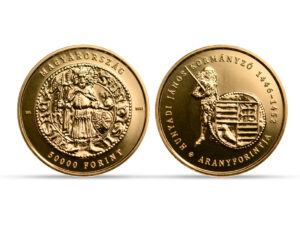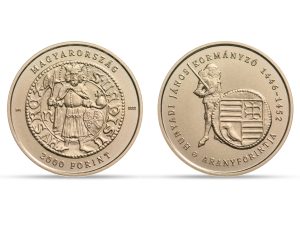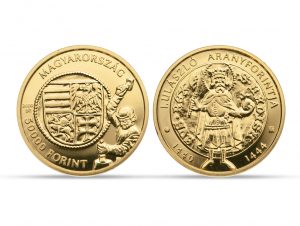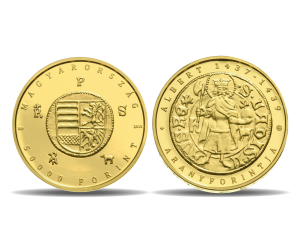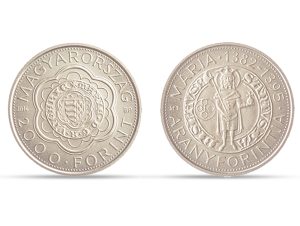Description
The sixth release in the Medieval Gold Florin series, the commemorative coin “The Gold Forint of Vladislaus”. The sixth coin of the collector series Gold Florins of Medieval Hungary was the commemorative coin of the gold forint of Vladislaus. Vladislaus in Polish: Władysław III Warneńczyk (1424-1444) King of Poland from 1434, King of Hungary from 1440 until his death. The first Jagello on the Hungarian throne. A collector coin that’s great for any collection! A memorable, valuable gift for any fan of history! We also recommend it to investors! ”
Front:A coat-of-arms split into four parts, shown on the golden coins of Vladislaus I, is featured as the main motif on the obverse in an asymmetric arrangement, bordered by a string of pearls arranged in a slightly unorderly manner, typical of Medieval coins. The coat of arms, split into four parts, was typically featured on golden forints from Sigismund’s rule uniting the elements of family and Hungarian royal coats of arms (Hungarian splits and the double cross). The coins, issued by Vladislaus I, are strongly distinguished from the golden florins of his predecessors by the representation of the Polish eagle and the Lithuanian knight appearing as a family coat-of-arms. Another reference to money history on the obverse is a representation of a typical coin minter of the 1400s, presenting an authentic minting technique.The front has the mandatory elements (denomination 2000 Forint, the legend Magyarország the mint mark BP. and the date 2020).
Back:On the reverse the golden florin of Vladislaus I is shown, with the only difference being that Saint Ladislaus’s figure was enlarged against the representation on the original coin by goldsmith Zoltán Tóth, the designer of the coin. Placed in the outer ring, the lettering ‘I. ULÁSZLÓ ARANYFORINTJA’ (the golden florin of Vladislaus I) is shown in the upper legend, and in the lower legend the years 1440 and 1444 make a reference to the time of Vladislaus I’s reign. The upper and lower legends are separated by a circular, decorative motif on the left and the master mark of Zoltán Tóth on the right.






